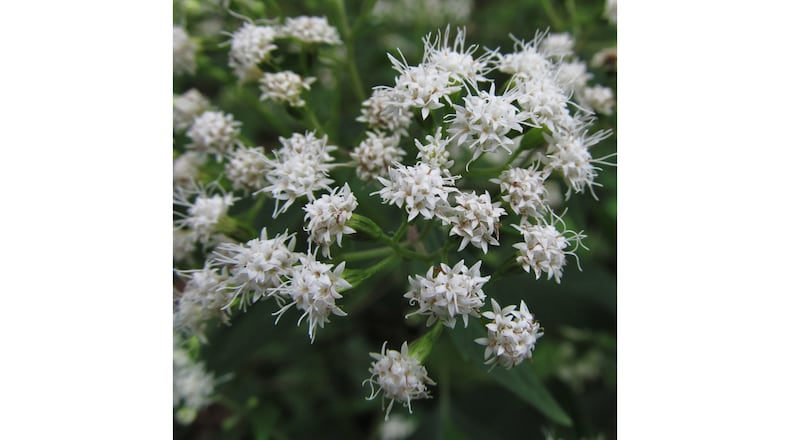Blooming now in moist, deciduous woods and bottomlands in North Georgia is an attractive wildflower known as the white snakeroot. “The bright flowers and rich green leaves make this a handsome, part-shade perennial,” according to the Georgia Native Plant Society.
Its charm, however, belies a sinister side: The white snakeroot (Ageratina altissima) contains potent toxins that, if ingested, are highly dangerous — even deadly — to people, pets and livestock. If cows eat the plant, the toxins can pass through their milk to people who drink it.
Before this connection was discovered in the 1830s, many people died from drinking the toxin-tainted milk. Their malady was called “milk sickness,” which earned a note in history when it was blamed for the death of Abraham Lincoln’s mother.
The malady ran a terrible progression. “Within days, a formerly healthy person could be bedridden with vomiting, often followed by coma and eventually death,” said an article in this month’s Smithsonian magazine. Even so, the disease’s cause remained a mystery.
In the 1830s, a young health practitioner in Illinois, Anna Pierce Hobbs Bixby, was determined to get to the root of the problem. She had been trained in midwifery and dentistry in Philadelphia and was appalled by the widespread suffering she observed from milk sickness. During her research, she concluded that the cause must be a poisonous herb.
One day, while rambling in the woods near her home, Bixby met a Shawnee woman who was an herbalist. The woman showed Bixby a plant that she said had killed many Shawnee cattle and people. It was the white snakeroot. (Supposedly, a poultice to treat snakebites was made from its root, hence its common name.)
Bixby knew that settlers often let their milk cows graze in woods where white snakeroot grew. She reported her findings, and tests confirmed that the plant indeed caused milk sickness.
Today, milk sickness is rare due to modern farming practices and cows having little access to the plant.
IN THE SKY: From David Dundee, Tellus Science Museum astronomer: The moon will be new on Monday. Mercury (very low) and Venus (low) are in the west just after sunset. Mercury will appear near the crescent moon on Wednesday evening. Mars is in the southwest at dark and will appear near the moon on Thursday night. Jupiter and Saturn rise in the east around midnight.
Charles Seabrook can be reached at charles.seabrook@yahoo.com.
About the Author
The Latest
Featured

